Top AI Tools For Photo Editing 2025


In Brief
In 2025, AI-powered photo editing has become fast, intuitive, and accessible, allowing anyone to create high-quality visuals for social media, e-commerce, and personal branding without technical expertise.

A picture is worth a thousand words, but in 2025, it’s worth a thousand clicks, too. As the internet shifts even more toward visual-first experiences, AI has stepped in to eliminate one of the biggest bottlenecks in content creation: editing.
The rise of AI tools within Canva, CapCut, and Gemini has made AI photo editing not just faster, but smarter. You don’t need to understand Photoshop or know how to read a creative brief to be able to make professional edits anymore. Just tell the machine what you want, and AI takes care of the rest. It’s that simple.
On social media, where TikTok and Instagram Reels have made our attention spans shorter and shorter, a tiny edit in an image can make the difference between your post going viral and it going into the abyss. But it’s not only about good looks. For e-commerce, AI-edited photos boost conversion. For resumes, they build trust. For personal brands, they communicate clarity and control.
What’s driving this explosion?
- Speed: Edits that took 30 minutes now take 3 seconds.
- Access: Tools are free or embedded in platforms you already use.
- Quality: AI now understands context, not just pixels.
And we’re only getting started. In 2025, photo editing has become prompt-first, multimodal, and democratized. The tools you’re about to see don’t just automate design, they help anyone become a visual storyteller.
What to Look For in an AI Photo Editor in 2025
The explosion of AI image tools in 2025 means you’ve got more options than ever, but also more noise. Not all photo editors are the same, and choosing the right one can make the difference between “meh” and mind-blowing. Here’s what you should look for when finding a top AI photo editor.
1. Prompt-Based Editing
The gold standard in 2025 is clear: tell the editor what you want in plain language, and it just does it. Whether it’s “make this look like golden hour,” “add a moody sky,” or “replace the person with a cartoon robot,” the tool should understand and execute, no sliders, layers, or lasso tools required.
2. Context Awareness
Great AI tools no longer just tweak contrast or color. They understand objects, people, depth, light, and intent. If you ask the tool to make something more cinematic, the tool should know to make the lighting more dramatic, to do some color grading, and potentially even to add some film grain. It should understand what you’re saying and how that adds to what you’re working from.
3. Multi-Image Consistency
Whether you’re editing a product catalog or an influencer photoset, consistency across photos matters. Top tools now let you apply the same prompt to a whole batch and keep the style uniform, ideal for brand building, storytelling, or campaigns.
4. Fast + Forgiving
Speed is critical, but so is iteration. You should be able to undo, re-prompt, or tweak a generation without starting over. Tools like Gemini and Runway have nailed this with responsive UIs and prompt history features.
5. High-Resolution Outputs
In 2025, you can use AI edits for basically everything. Not only quick social media edits, but also high-res images for printing, publishing, and even billboards. The best tools deliver 4K quality without any negative side effects.
6. Built-In Integrations
The best AI editors are showing up where you already work: inside Google Photos, Adobe, Shopify, and even Canva. Look for tools that don’t force you to change your workflow.
The Top AI Image Editors of 2025
The AI photo editing space has exploded in 2025. While many tools offer overlapping features, each one tends to have a sweet spot. Whether it’s realism, creativity, speed, or ease of use. Here are the top editors right now.
Google Gemini (Nano Banana)

Google’s viral “Nano Banana” upgrade to Gemini’s image editing gives users an incredibly fluid way to edit photos using natural language. You can erase objects, blend two images, restyle a photo, or generate entirely new visuals, all by just telling Gemini what you want. What makes it stand out is its ability to preserve likeness. Especially faces, pets, and personal details. It feels more intuitive than many competitors, and creators are already using it for social content, thumbnails, and even product visuals.
Adobe Photoshop + Firefly

Photoshop remains the industry standard, and with Firefly now deeply integrated, it’s smarter than ever. The new generative fill tools let you expand images, remove elements, or create entire scenes from prompts. It’s still the go-to for professionals who need control, layering, and precision. The downside is that it’s still complex for new users, and the subscription pricing isn’t for everyone.
Luminar Neo
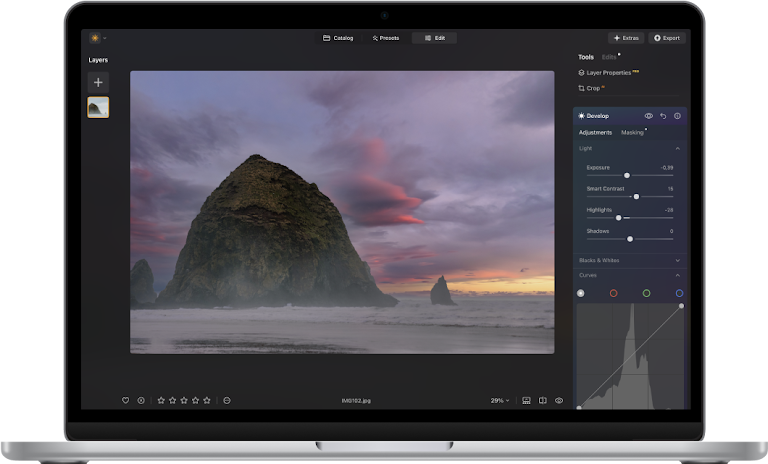
Luminar Neo uses AI to take the grunt work out of photo editing. It’s especially popular among photographers for things like sky replacement, portrait enhancement, and lighting correction. The interface is clean, and most edits take just a few clicks. If you want something more powerful than Canva but less intense than Photoshop, this is a strong middle ground.
Canva AI
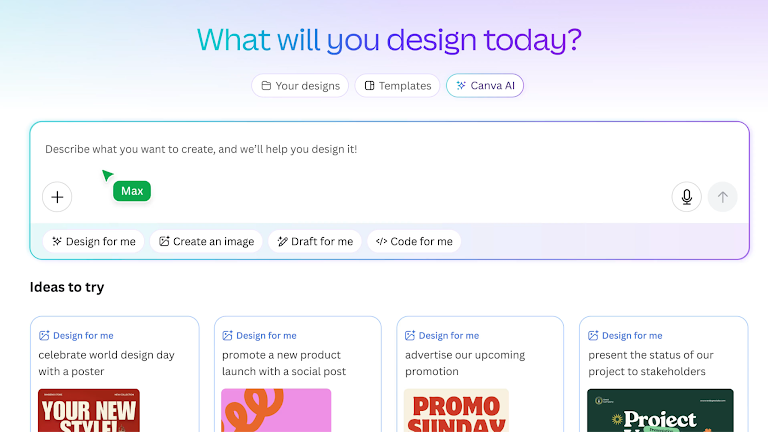
Canva’s AI tools are designed for speed and simplicity. With smart background removal, style suggestions, and AI-assisted layout edits, it’s ideal for content marketers, small businesses, and casual creators. You won’t get pixel-level control, but you’ll get fast results, especially for social graphics and ad creatives.
Pixlr
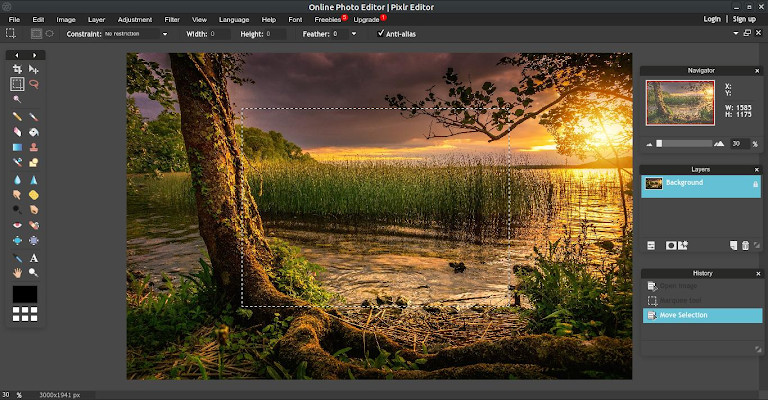
Pixlr is a lightweight, browser-based editor with surprisingly solid AI features. It’s great for quick background removal, object erasure, or fun filter edits. If you don’t want to install anything or just need fast edits for web use, Pixlr is a good pick.
Lensa
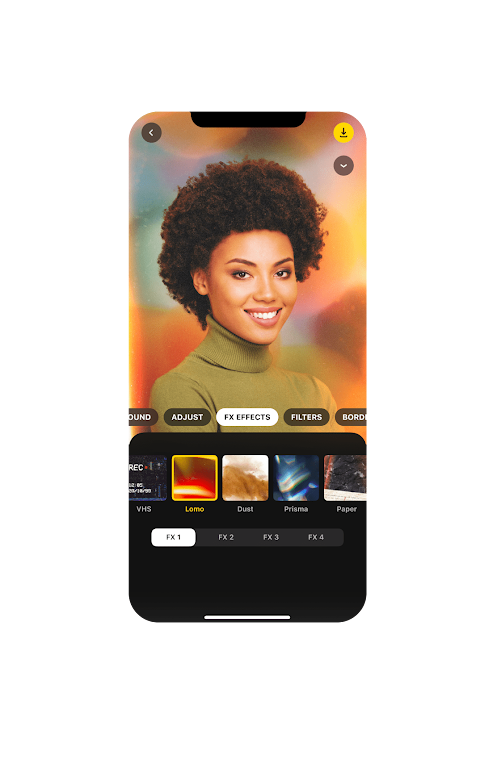
Lensa first went viral with its AI avatars, but it’s grown into a full editing app. You’ll find tools for skin smoothing, lighting tweaks, and background effects. Lensa is basically great for quick personal upgrades or polished profile pics. It’s a mobile-first tool, great for selfies, portraits, or profile photos. It’s kind of like the FaceTune version of AI.
Claid.AI

This tool is designed specifically for brands that need polished product shots. Claid.AI uses AI to clean up photos, optimize lighting, and place objects on white or styled backgrounds, perfect for e-commerce teams. It’s more of a niche tool, but if product photos are your job, Claid’s automation can save hours.
Radiant Photo
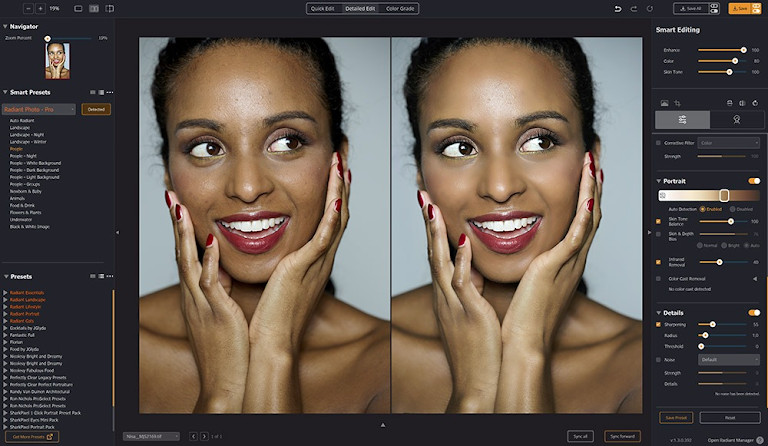
Radiant is a favorite among nature photographers and privacy-conscious users. It runs locally (no cloud uploads), has strong one-click enhancements for landscapes, and delivers crisp, color-rich outputs. It’s less about wild transformations, more about perfecting the real photo you already have.
Let’s Compare the Best AI Photo Editing Tools
| Tool | Best For | Strengths | Weaknesses |
| Gemini (Google) | Fast, smart inpainting | Deep integration with search & Google Photos, natural UI | Still feels like a beta, slightly glitchy mask detection |
| ChatGPT-5 Vision | Ultra-detailed manipulation | Uncanny control, DALL·E backbone, prompt + brush combo | Steeper learning curve for casual users |
| Adobe Firefly | Professional-grade outputs | Tight Photoshop/Express integration, detailed refinements | Subscription costs, sometimes over-edits faces |
| Canva AI | Fast social-ready content | Templates, clean UI, great for marketing teams | Limited pixel-level control |
| Runway ML Gen-3 | Video-to-image workflows | Cutting-edge diffusion models, creative edge | Still evolving on refinement tasks |
| Lamini Canvas | Enterprise AI asset generation | Private fine-tuning, asset pipelines, team workflows | Mostly enterprise-only for now |
| Pika | Animation from stills | Fun and intuitive for motion edits | Early-stage, lacks Photoshop-level precision |
How You Can Get Started Today
After testing and comparing dozens of tools, a few clear winners stand out across different use cases. Whoever you are and whatever your goal is, there’s an AI editor that fits your needs.
Don’t limit yourself to one tool. Each platform excels in different areas; so experiment, combine outputs, and match your toolset to your workflow. Most platforms offer free credits or demos, so try before you commit.
Disclaimer
In line with the Trust Project guidelines, please note that the information provided on this page is not intended to be and should not be interpreted as legal, tax, investment, financial, or any other form of advice. It is important to only invest what you can afford to lose and to seek independent financial advice if you have any doubts. For further information, we suggest referring to the terms and conditions as well as the help and support pages provided by the issuer or advertiser. MetaversePost is committed to accurate, unbiased reporting, but market conditions are subject to change without notice.
About The Author
Alisa, a dedicated journalist at the MPost, specializes in cryptocurrency, zero-knowledge proofs, investments, and the expansive realm of Web3. With a keen eye for emerging trends and technologies, she delivers comprehensive coverage to inform and engage readers in the ever-evolving landscape of digital finance.
More articles

Alisa, a dedicated journalist at the MPost, specializes in cryptocurrency, zero-knowledge proofs, investments, and the expansive realm of Web3. With a keen eye for emerging trends and technologies, she delivers comprehensive coverage to inform and engage readers in the ever-evolving landscape of digital finance.


















































